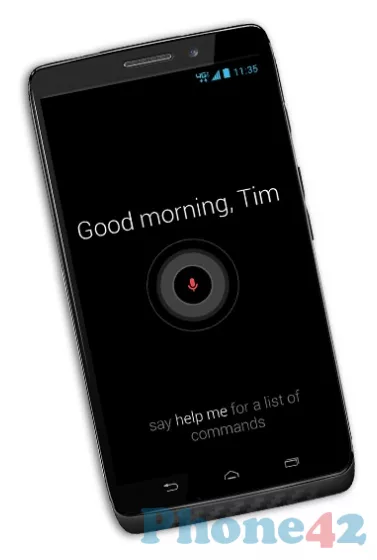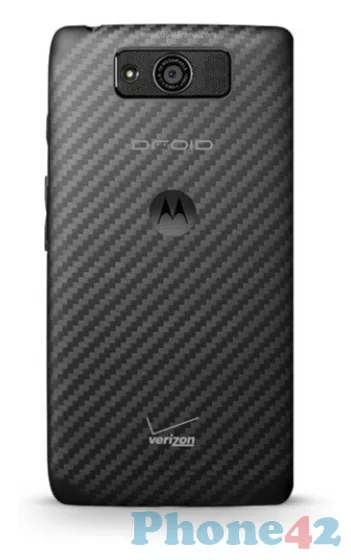
Motorola Droid MAXX (2013)
This phone comes equipped with a 5 inch Super AMOLED display, a Qualcomm Snapdragon S4 Plus MSM8960 chipset, and 2 GB of RAM.
Let's see what makes this device stand out!
Table of Contents
- Motorola Droid MAXX specifications
- Weight, dimensions, colors
- System, chipset, performance
- Display type, size, resolution
- Memory, storage
- Cameras, flash
- Connectivity, network, wireless
- Battery type, capacity, charger
- Features, sensors, specials
- Verdict, pros and cons
This article shares our personal experiences and thoughts about using the Motorola Droid MAXX smartphone. We hope to offer helpful insights to others interested in this device.

Motorola Droid MAXX specifications
| Brand | Motorola |
|---|---|
| Name | Droid MAXX |
| Model | XT1080 |
| Release date | 2013 |
Weight, dimensions, colors
| Weight | 5.89 oz |
|---|---|
| Dimensions | 5.41 x 2.8 x 0.33 inch |
| Colors | black, red |
| SIM type | Nano SIM |
The weight of Motorola Droid MAXX is about 5.89 oz with battery. This is average for smartphones of the same size. Smartphones use a Nano SIM as a small chipcard for a subscriber identity module (SIM).
System, chipset, performance
| OS version | Android OS v4.2.2 (Jelly Bean) |
|---|---|
| SoC | Qualcomm Snapdragon S4 Plus MSM8960 |
| CPU | Dual-core 1.7 GHz Krait |
| GPU | Adreno 320 |
The Motorola Droid MAXX comes with Android OS v4.2.2 (Jelly Bean) out of the box. Android is a mobile operating system. Google built it using a modified version of the Linux kernel. They also used other open-source software. This CPU can be fast enough for basic phone operations. Qualcomm's Snapdragon processors work with Adreno GPUs. The processors are designed for the GPUs.

Display type, size, resolution
| Display type | Super AMOLED |
|---|---|
| Screen size | 5 inch |
| Resolution | 720 x 1280 px |
| Multitouch support | yes |
AMOLED displays enable an Always-On Display feature. A part of the screen remains active to display the time, date, and notifications. The 5 inch display make this smartphone pocket-friendly. The size of the screen is measured diagonally, from corner to corner.
Memory, storage
| RAM | 2 GB |
|---|---|
| Internal storage | 32 GB |
| Memory card slot | no |
The smartphone has 2 GB of RAM. It can run many apps at once without much lag or slowness. More RAM lets us keep more apps and processes open in the background. This keeps the device from slowing down. Generally, a smartphone should have a minimum of 32 GB of internal storage. The Droid MAXX has 32 GB. The internal storage of the Motorola Droid MAXX (2 GB) cannot be expanded.

Cameras, flash
| Main camera | 10 MP, 4320 x 2432 px, autofocus |
|---|---|
| Flash | LED |
| Selfie camera | 2 MP |
This single camera can be enough for many smartphone users, it depends on their photography needs and preferences. The main camera of Droid MAXX smartphone does not have OIS. The optical image stabilization (OIS) is an important feature in smartphones.
Connectivity, network, wireless
| GSM 2G bands | 850 / 900 / 1800 / 1900 |
|---|---|
| Network coverage | 2G / 3G / 4G |
| Wi-Fi | Wi-Fi 802.11 a/b/g/n/ac |
| Bluetooth | v4.0, A2DP, LE |
| GPS | A-GPS, GLONASS |
| NFC | yes |
| FM radio | no |
| USB | microUSB 2.0 |
| Headphone | 3.5 mm jack |
The 4G provides faster data transfer speeds compared to previous generations. The phone is capable of connecting to Wi-Fi networks. The Droid MAXX smartphone is capable of connecting to Bluetooth devices. The GPS allows this smartphone to find their exact location. It provides accurate navigation and mapping. The Droid MAXX comes with NFC (Near Field Communication) functionality. The 3.5 mm headphone jack allows us to connect wired headphones or earphones to the device.
Battery type, capacity, charger
| Type | Li-Ion 3500 mAh, non-removable |
|---|
The Li-Ion 3500 mAh, non-removable battery gives the smartphone a good battery backup. The Li-ion is a low maintenance battery. It does not need periodic full discharge. The battery of Droid MAXX isn't removable without voiding the warranty.
Features, sensors, specials
| Sensors | accelerometer, barometer, compass, gyroscope, proximity |
|---|
Today, smartphones come with many sensors. They help make the user experience better. The accelerometer is a sensor. It measures the tilting motion and orientation of the phone.
Verdict, pros and cons
Every phone has its strengths and weaknesses, and this Motorola phone is no exception. As with any device, there are aspects that shine and others that fall short. By examining both sides, we can paint a complete picture of what this phone has to offer. Let's explore its standout features and areas for improvement. Remember, this is just my opinion, and yours might be different.
Pros
- Super AMOLED display
Cons
- limited-size screen
- non-expandable storage
- single camera setup
- no OIS function
- no 5G support
- no Type-C USB port
- low-capacity battery
- no fingerprint reader
Please let us know if you find incorrect information or something isn't working. Also, tell us if you have a suggestion for improvement.
 I'm Lucas Bradley, the founder of the Phone42.com site. I love technology, especially smartphones, and I've been working with tech stuff for more than 20 years. This means I've seen a lot of changes and have learned a bunch about what makes a good phone. On Phone42.com, I look at all kinds of phones. They can be from big, well-known companies or new ones trying to make their mark. I want to help people understand what's new and cool in the world of smartphones, in a way that's easy to get.
I'm Lucas Bradley, the founder of the Phone42.com site. I love technology, especially smartphones, and I've been working with tech stuff for more than 20 years. This means I've seen a lot of changes and have learned a bunch about what makes a good phone. On Phone42.com, I look at all kinds of phones. They can be from big, well-known companies or new ones trying to make their mark. I want to help people understand what's new and cool in the world of smartphones, in a way that's easy to get.